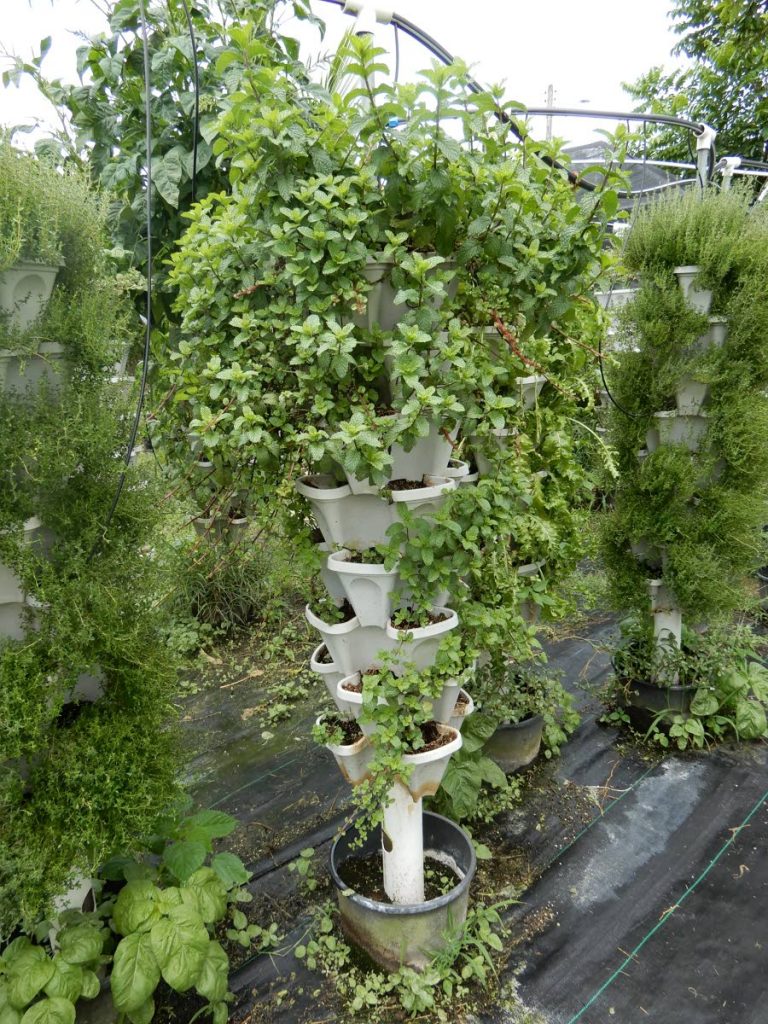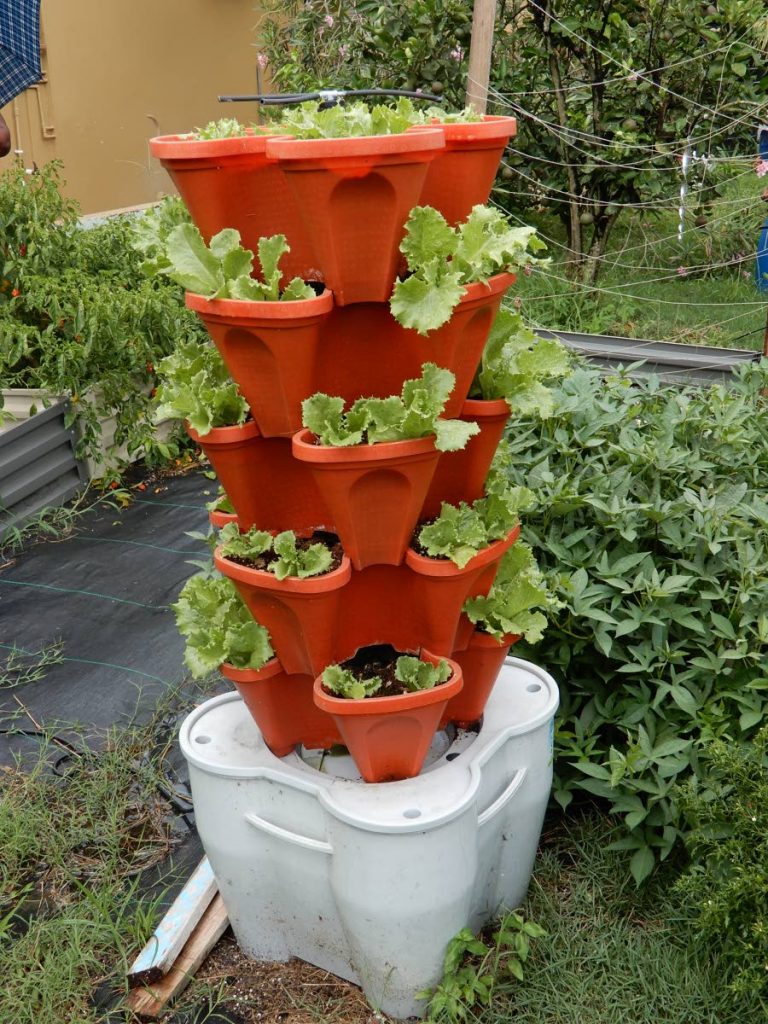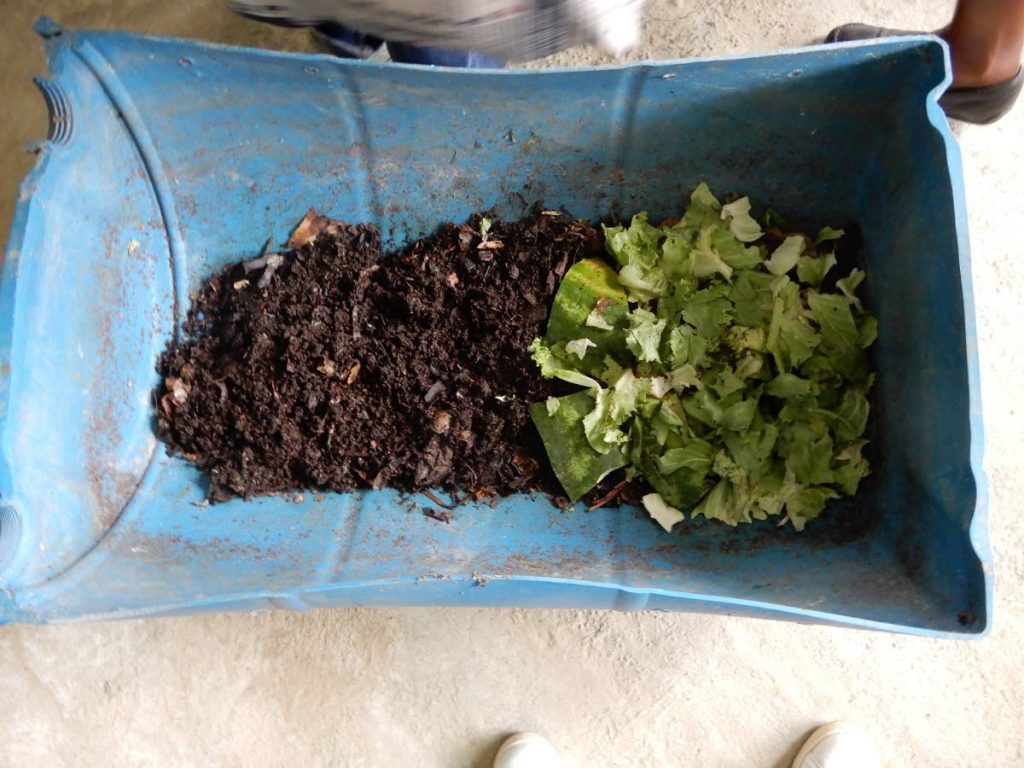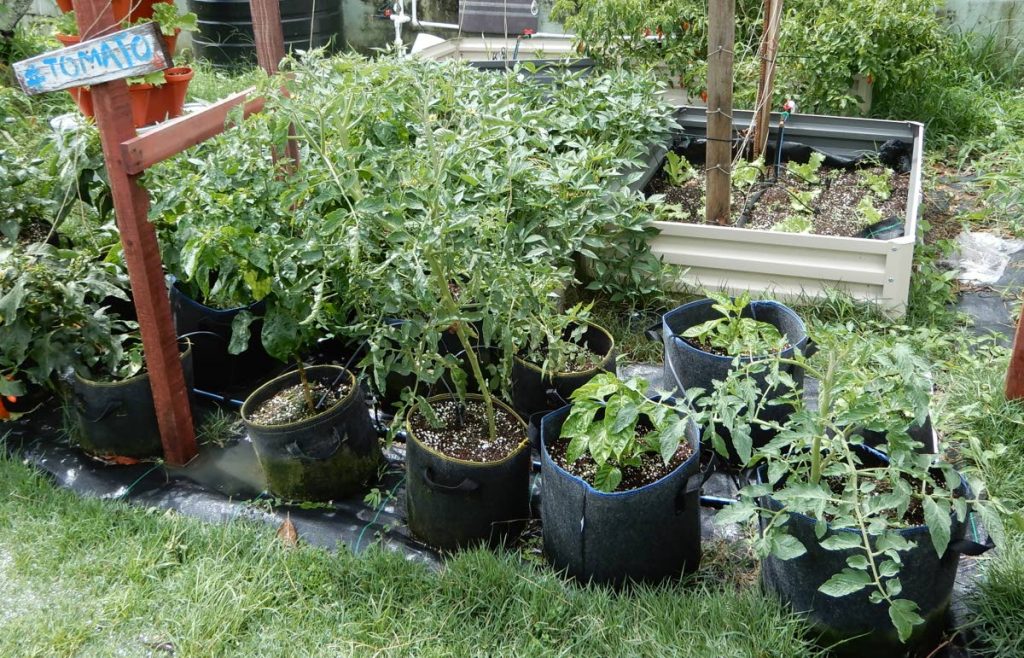Sustainable farming

Elizabeth Chin and Wilma Charles
On a rainy morning in July, 44 EHC members and friends set out on a field trip to visit two small farms, very different in the kind of farming they undertake but very similar in their philosophy of not wasting or re-using resources.
It was expected to be a fun, educational outing that would take us to a vermiculture farm in Gran Couva and a hydroponics farm in Freeport. Our interest in seeing an actual vermiculture operation was heightened as this would be a first time visit for most of us. We were not disappointed.
Boissierre Greens Earthworm Farm
Dexter Ragoonanan, the owner of Boissierre Greens Earthworm Farm in Couva, welcomed us warmly and when we were seated told us the history of how he began his farm, his trials and errors and the moral and physical support from his family which enabled him to become a successful vermiculture farmer.
Many of us think of worms as slimy pink things and do not distinguish between one worm and another, but, in fact, there over 3,500 – 5,000 named species (depending on the source) worldwide and probably many more as yet unnamed.

Vermiculture or culture of worms to produce compost is not new and is practised in many other parts of the world such as the US, Cuba, Malaysia, India and the Phillipines. The worms feed on waste material and excrete it as worm casts (worm poop) which contain available forms of the minerals nitrogen, potassium, calcium and magnesium which are all necessary for soil health and plant growth.
At first, Ragoonanan tried importing a starter batch of red wriggler worms (Eisenia foetida) to use from the US. They all died since they couldn’t tolerate the tropical heat. Then he tried collecting worms from his garden, fed them on manure and chicken mash but most of those died too. The heat generated by the mash and manure was too much for them. After that he decided to approach the University of the West Indies where research was being done on using local worms for vermiculture. Ragoonanan learned from this association that not all worms are suitable for composting and that each species has different habits and requirements. Those that are suitable should be able to survive the composting environment such as temperature, pH and humidity; they must be able to efficiently convert organic waste materials to compost and must breed rapidly.

He also discovered that the worms used in this project are not our ordinary garden worms, but are the African night crawler (Eudrilus eugeniae) and the Indian blue worm (Perionyx excavatus) types.
The African night crawler is a robust worm, about eight inches long, whereas the Indian blue is small and slim, about three inches long. Both live in the upper six inch of the soil, are voracious feeders and excellent composters. Worm food can include grass clippings and garden waste, vegetable peelings, paper (not shiny paper), cardboard, aged animal manure, chitin (crab shells) and azomite, a rock dust rich in minerals but not mined in Trinidad. They multiply rapidly completing their life cycle in two to three months and break down vegetable matter in a short period of time to produce a fine, dry type of compost used in horticulture.
Ragoonanan has designed a worm bin suitable for home vermicomposting. He demonstrated this using an oil drum cut vertically. Half the bin is filled with vegetable and fruit waste and the worms added and left to feed. When this has been converted to compost more waste materials are added to the other end of the drum and the worms will migrate to that. Care must be taken not to add to too much nitrogenous waste or it will overheat and the worms may leave the food or die.
Green Age Farm
Our final stop was at the Green Age Farm in Freeport run by two young entrepreneurs, Kevin Singh and Faariah Khan-Singh. There we saw vertical hydroponic systems being used to grow vegetables and herbs in “Mr Stacky pots.” These stacking pots save space and therefore many more crops can be grown in any particular area. Hydroponics is a very efficient method of growing vegetables without soil, making the best use of space, nutrients and power. The system used at the Green Age Farm is a non-recirculating system (drain to waste, DTW) in which watering is automatically timed to deliver a precise amount of nutrient solution twice a day. The nutrient tank contains a complete mix of hydroponic nutrients which is delivered straight to the plants roots resulting in healthy plant growth. The growing medium used at Green Age farms is a mixture of cocopeat and perlite. The plants can be grown in stacky pots, buckets or growbags. This system takes little time and maintenance and produces high yields of high quality produce.

Green Age Farms is now the distributor for the Mr Stacky pots and which have become popular with home gardeners, catering businesses and commercial clients alike.
We left for home loaded down with bags of worm compost, spring pots (fabric pots) and full of good intentions.
For further information contact the Eastern Horticultural Club at 357-5033, or 720-2698 or easternhorticultural@hotmail.com The club meets on the first Saturday of every month (except public holidays) at 3 pm at Morton Hall, Aramalaya Presbyterian Church, Cochrane Street, Tunapuna.


Comments
"Sustainable farming"